A Psychic Reveals How to Read Facial Expressions and Body Language Meaning
Date 8/31/2025
Explore More:
Visual Cues
Nonverbal communication is much more important than most people realize. We tend to associate communication with verbal language, but much of it involves body language. Becoming aware of what people are saying to you with facial expressions, gestures, posture, apparel choice, and even tone and volume of the voice can be extremely helpful in developing insight into other's motivations and intent.
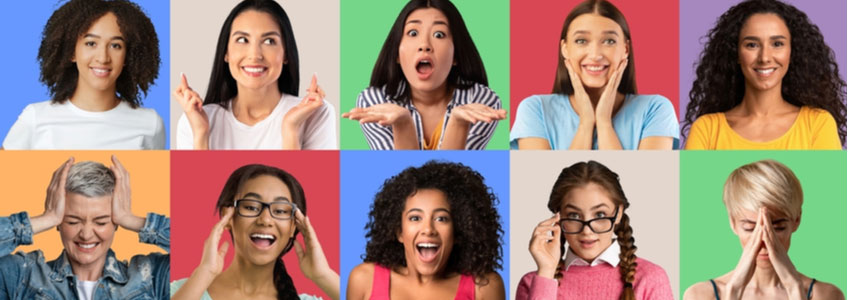
Body Language Meaning is Hidden in Plain Sight
Since people aren't generally aware that they are communicating nonverbally, body language is often more honest than words which can be crafted to suit one's agenda. Never think that someone isn't telling you how they feel by the way they behave and communicate non-verbally. They are. That first gut level reaction you have based upon their non-verbal clues (before your mind or heart starts talking you out of it)? That’s the same intuitive gift that as a psychic advisor, Psychic Heather has spent her lifetime developing and listening to. However, anyone can learn how the body indirectly and sometimes automatically reacts in certain situations. Once you understand body language, you'll easily be able to pick up on the clues. With practice, you can develop your intuitive capabilities, too.
Research indicates that those who can effectively read and interpret nonverbal communication enjoy greater success than those who lack these skills. Awareness of body language can also aid one in managing how others perceive what is being said. Perhaps most importantly, body language is universal. All humans tend to express emotions the same way with body language. A smile is always a smile, in other words.
Let’s begin with facial expressions, simply because these are usually the first things we notice and most people are at least vaguely aware of what expressions can mean.
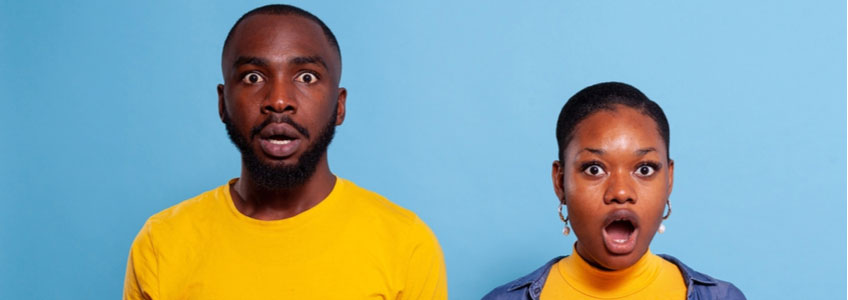
Facial Expressions Speak Volumes
Imagine this: Your husband comes home from work and you ask how his day was. He says, “It was good,” or something to that effect but yet, his facial expressions include squinting and furrowing of the forehead. Also, his tone of voice is low and he doesn't seem to want to talk.
Do you believe his words or his expressions? This is not to say he is being deceptive with his words. But rather, he may not be able to verbalize the problem yet as he appears to still be trying to figure it out himself as indicated by a furrowed brow. The communication here is basically, "I don't want to talk about it right now" and further questions may lead to further irritation.
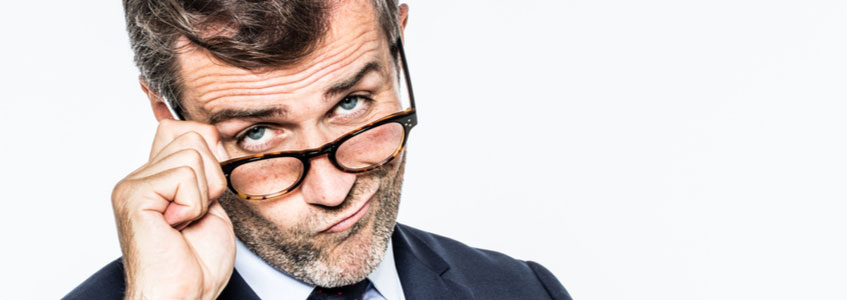
The Eyes Have It
Eye Contact. Making eye contact is a sign of interest, and mutual eye contact makes us feel favored and remembered. When eye contact is mutual and the bonding is welcomed, there is a tendency to blink less and also to occasionally glance away, which is a good thing, because even in the animal kingdom, staring creates discomfort and is perceived as territorial and threatening.
Eye Blocking. Some facial expressions to be aware of include things such as what is referred to as “eye blocking.” Generally speaking, when a subject comes up that someone does not want to see, that person may block their eyes in some way. Either by placing hands over the eyes, rubbing the eyes or just turning away closing the eyes. We often do this with disturbing stories on the news or unpleasant scenes we may encounter in our daily lives. We often will turn away or close the eyes. When eyelids are tightly compressed, it often indicates a person is attempting to block out negative news.
Blinking. People blink more rapidly when they are nervous or troubled. In fact, darting eyes or a series of rapid eye blinks (absent a physical problem, of course) may reflect an inner struggle or lying. An example of this would be Richard Nixon's famous "I am not a crook" speech. If you watch the video, he blinks rapidly and avoids looking into the camera.
Eyes Wide Open. When a person DOES want to see something or becomes excited about good news, the eyes are often opened widely. Also, we maintain eye contact longer with those we have positive feelings toward and avoid looking at people we wish to avoid, which just makes sense. In other words, if you notice him/her looking into your eyes frequently, you can rest assured his indicates positive feelings and interest in what you have to say.
Eyebrow Flashing. An eyebrow flash is a quick raising of the eyebrows which indicates interest – professional, social, or even romantic. It is universally recognized as a greeting, though different cultures may see it as friendly or forward.
Eyebrow Raising. Additionally, one raised eyebrow may indicate that a person questions or is not convinced by what another says. Both eyebrows raised along with a nod of the head may show they agree with a view they have never considered before. The eyebrows may be lifted longer as a sign of positive feelings.
Smiling with the Eyes. One last thing about the eyes. If someone has perfected it, you may miss the signs of a fake smile. However, take note of their eyes. A genuine smile always reaches the eyes. You'll see a person's eyes narrow as the orbicularis oculi muscle contracts, squeezing the eyes closer together. If someone has laughter lines around their eyes, these will wrinkle. Picture George Clooney's broad and infectious smile — with smiling eyes and crow's feet. Fake smilers don't smile with their eyes.

Word of Mouth
We can also tell a lot by a person's behavior with the mouth. A smile is easy to read, but other behaviors may be less obvious. Here are some examples.
Disappearing lips. We have all seen people who literally make their lips disappear by biting them or sucking them in between the teeth into the mouth. Disappearing lips are indicative of stress or anxiety. The person is preventing a release of emotion in most cases.
You may have experienced this example of disappearing lips when watching a conversation between two political opponents. One of the opponents was quite vocal and loud leaving the other with little chance to interject anything. As a result, it was obvious that the other person was becoming stressed and perhaps as a way to avoid an outburst, he caused his lips to all but disappear throughout the interview. When you see this behavior in someone, it should tell you to take a time out as the person is becoming too stressed out.
Puckers and Pouts. Alternatively, we tend to pucker our lips during a conversation when we have something to say. Puckering (other than for a kiss, of course) can indicate disagreement as the person may be considering an alternative to what is being said. Pouting can take many forms: there’s the traditional fat lip we’re all familiar with, but pouters might also roll their eyes, sigh heavily, or flare their nostrils in disgust. People who pout are consciously or unconsciously attempting to be noticed. Finally, the sneer. We know what this looks like and what this means. We sneer at things we find distasteful.
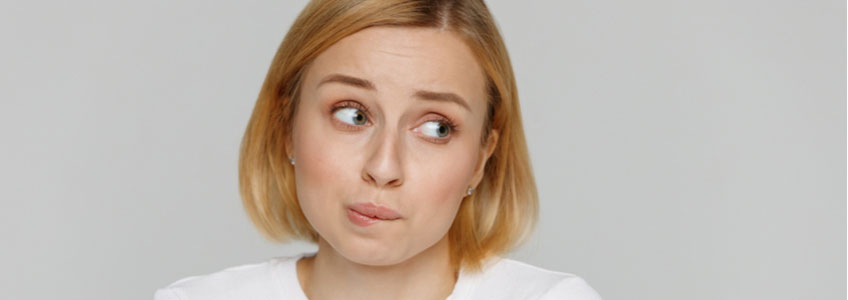
Head and Shoulders
Forehead Frown. The forehead can also give clues into a person's mental state. Most of the time, our foreheads are relaxed. But we can actually 'frown' with our foreheads. This usually occurs when a person is anxious, sad, or concentrating intensely on a problem.
Tilted Head. When someone tilts their head to one side, it indicates a willingness to be vulnerable, as this body posture exposes the neck. It’s a disarming, softening gesture, often indicative of romantic interest, though it can also be indicative of openness to hearing what someone has to say.
Neck Rubbing. When people rub their necks, it’s usually a sign of insecurity or stress. Habitual neck rubbing is a form of stress relief for some people.
Shoulder Hunching. This posture is a signal of submissiveness, defensiveness, or defeat, as the neck and chest are closed off and one’s energy is tightly contained.
It’s All Tonal
Emotional energy is conveyed through vocal pitch, cadence, and tone. Social Scientists call this paralanguage. Psychics read this energy by bringing in their gifts, as empaths who can feel the information through their bodies, or as clairvoyants, who can discern the information via images, or perhaps as clairaudients, who can map this auditory emotional energy to an inner dialog in which they hear spoken answers in response. You too, likely find yourself responding or reacting to tone of voice and other auditory cues as much as the words that are spoken to you.
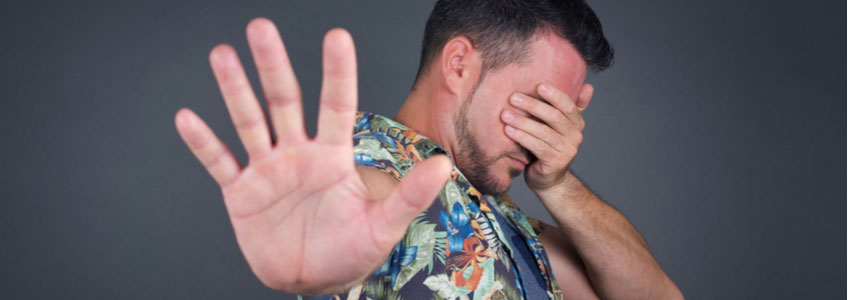
Actions Speak Louder Than Words
The face can reveal a great deal of information, but facial expressions should always be compared with nonverbal communication of the rest of the body.
Nonverbal communications originate in the limbic brain or the action center. This part of the brain reacts to the world reflexively or without thought most of the time. You can learn to control your verbal communications, to some extent, but it takes great effort, and most people are not even aware of what they are saying with their bodies. It can be incredibly empowering to have a basic grasp of the grammar and syntax of body language.
Have you ever heard comments such as: "My wife just filed for divorce, and I had no idea she was unhappy." or "I got fired today; I didn't know my boss was unhappy with me" or even "he tried to hit me; I never saw it coming." People making statements like this are not paying attention to body language which basically just means observing the world and the other people in it effectively.
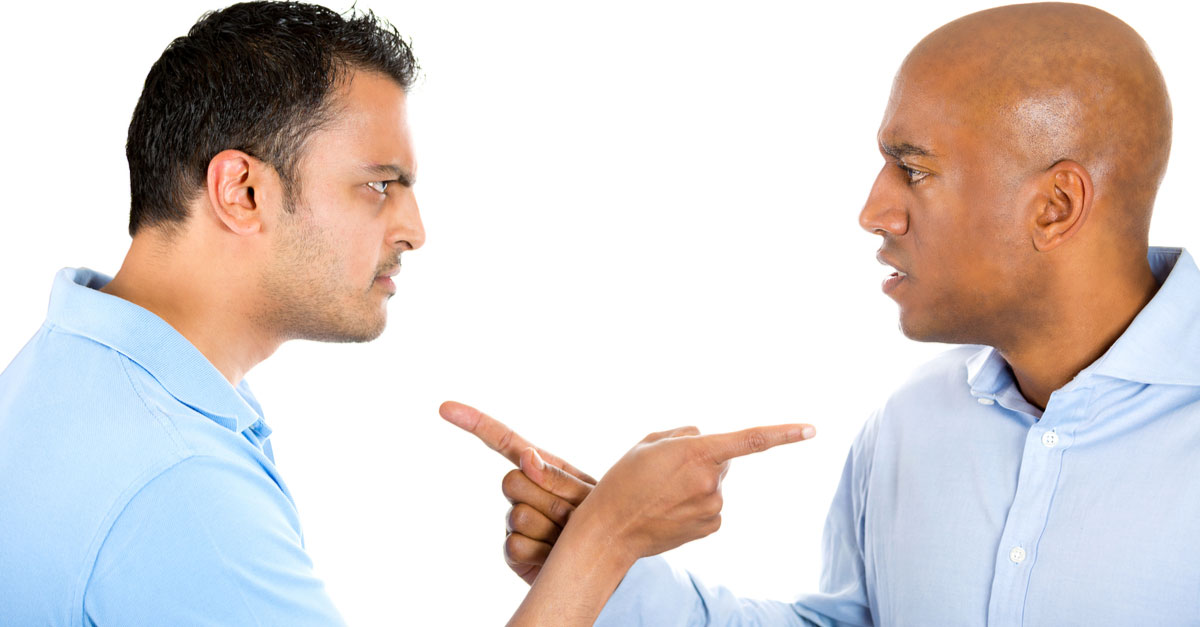
Freeze, Flight, or Fight
Most people have heard of the “fight or flight” response. A more appropriate label might be the “freeze, flight or fight” response, in that order. When attempting to engage someone in a conversation which may be confrontational, we will see one of these three reactions. At first, the person may freeze. The body language of his stage includes things like “the deer in the headlights” look, or a defensive posture with the head held down. The body will generally not move at all. Children often exhibit this behavior when they feel they are getting into trouble.
Sometimes people will elect the flight response and simply try to flee from confrontational conversations. You can identify the flight response often before the person even becomes aware of it themselves. You may see a person distance themselves from you or literally turn away and face the wall or a door. The eyes will begin to seek out means of escape such as a door. Blocking behaviors may also be observed such a rubbing the eyes to literally block sight or placing the hands over the face.
It’s fairly easy to see when a person is preparing for the fight response as well. One form of modern aggression is the argument. You literally see people take a stand when they feel strongly about something by placing their feet firmly on the ground, usually at a distance from one another. The chest may be puffed out. The personal space of others may be invaded as well. Remember that when a person verbally communicates emotional arousal, that person's ability to think effectively may be compromised. As hard as it may be to do, the best action at this point is generally withdrawal or a 'time out' until control over emotions is regained. It’s best to have confrontational discussions when both people are in control of emotions and thus are more able to think clearly.

Here are some other body language clues to look for:
Pay Attention to Posture
When people feel powerful, they spread out and take up space; when people feel diminished, they make themselves smaller. Interestingly, in the presence of people who chronically take up space, others will collapse themselves and hold themselves back instead of mirroring the space-claiming behaviors.
Some researchers have shown that by “faking it till you make it” – that is, deliberately taking on power postures that take up space and convey confidence and authority, that you can give yourself a neurochemical boost and feel more empowered. In psychic terms, it is called "working with energy." It starts with visualization, feeling the feeling, and manifesting the desired outcome.
Crossed Arms and Legs. Women, in particular, tend to cross their legs out of habit. Often this means nothing and is just someone's preferred posture. However, in other instances, crossed arms and legs indicate a closed and guarded individual. The person may be friendly and polite but is keeping you at a distance. On the other hand, a relaxed posture with open arms, a forward lean, and hand gestures with open palms show interest, engagement, and openness.
Crossed arms are a sign of defensive resistance, which suggests that someone is uncomfortable or in disagreement with someone else’s point of view. It signals to anyone you’re talking to that you’re ready for the conversation to end. It’s also sometimes interpreted as a sign of egotism. Rather than crossing your arms, you should take a more open stance and keep your arms at your sides.
Fidgeting. Figuring out if someone is lying is easy if you know what to look for. Fidgeting, darting eyes and excessive blinking are signs some is lying. Some liars try to deceive by doing the opposite — trying too hard not to fidget. This results in stiffened body posture, a pursed lip, and intense eye contact. They're trying to not give themselves away by being too still. Distractibility sends the message the person is really bored or perhaps even arrogant enough to believe the conversation is beneath them.
An Equal Handshake. When a handshake is exchanged between equals, it is accompanied by eye contact and a smile, fingers pointed downward when approaching the other person with a slight lean towards them, equally firm pressure in the clasp, and a release after 1-2 seconds. A handshake in which the other person barely reciprocates or conversely, overpowers your grip or holds on too long, indicate a power imbalance that will play out in other ways in the relationship.
Body Mirroring. Body mirroring is a fascinating phenomenon. For instance, someone yawns and in seconds, you yawn. On a deeper level, body mirroring is a subconscious response to people we like or immediately bond with. Without knowing it, people who click start adopting similar mannerisms, tone of voice, or gestures. It's a great sign on a date. If you notice someone is copying your movements, take it as a sign they like, accept, and trust you.
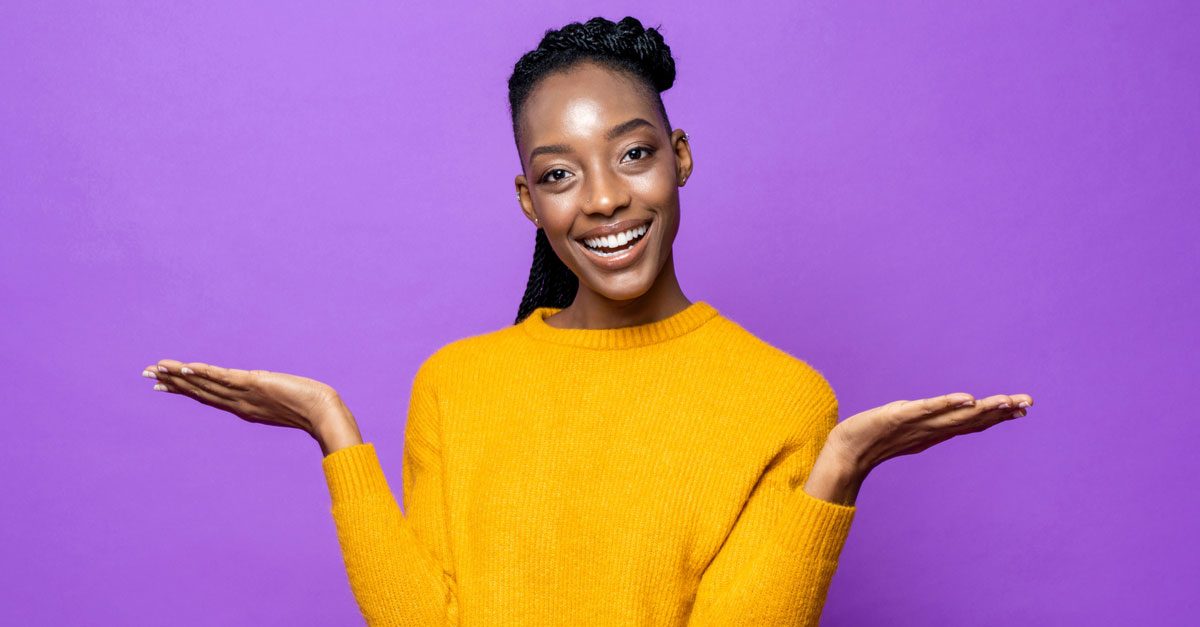
Exercise the Mind-Body Connection
One important thing people often fail to realize is that the body/mind connection works both ways. Just as a mental state can affect body language, body language can also control the mental state. Taking charge of one can benefit the other. In other words, when you’re feeling down you can literally and physically lift yourself up.
The first empowering step is to learn what your body is saying to you. What do your eyes say? Are you squinting, drawing your eyebrows together? Do your eyes “feel worried”? How about your mouth? Are you smiling? Frowning? Are your teeth clenched? Think about your shoulders. Do you feel tension and stress? Even your heart rate can tell you about your emotional state and, to some extent, you have control over that. When you’re anxious, for instance, your heart may race, but you can slow it down with deep breathing exercises.
You can also read yourself by paying attention to things like your posture and expression. Generally, when people are depressed, they describe themselves as feeling down and the body reflects this. We can often tell when someone else has the blues from body language. Shoulders droop, the head is held down, and usually even the voiced is lowered. When you listen to language and word choice, depression can be evident as well. Someone who chooses words with negative connotations will probably report depressive symptoms.
Again, the connection works both ways. By controlling body language consciously, you can send signals to your brain that you feel better. It really is true that smiling will make you feel better. Pay attention to your body, posture, tone and your choice of words. Lift yourself up literally and this will affect your thoughts and emotions.

Read Body Language by Reading Energy
This is just a sampling of the many non-verbal cues that body language conveys. What’s important to remember is that there is no one dictionary of body language meaning, because context has to be taken into account. Crossed arms could mean that a person is blocking information, or that she is cold. Touching an ear could indicate that someone subconsciously does not want to hear what is being said, or it could be a self-soothing gesture of comfort under stress. This is where paying attention to your intuition, and reading energy comes in.
When words and non-verbal behaviors don’t match, a psychic advisor can guide you in interpreting body language, energy, and other hidden information to help you gain valuable insight into other’s motivations and intent. We can be sounding boards for gut-checking your perceptions, validating your feelings, and offering you an objective view of the situation and alternatives. We encourage you to give a psychic advisor a try.
